How High Should a Garden Fence Be? Balancing Security and Aesthetics
- February 15, 2024
- 0 comment
Discover the perfect balance between security and aesthetics for your garden fence. Learn key considerations for optimal height and design. As we delve deeper into crafting the ideal garden sanctuary, the height of a garden fence emerges as a pivotal factor influencing both the security of our homes and the visual harmony of our outdoor spaces.
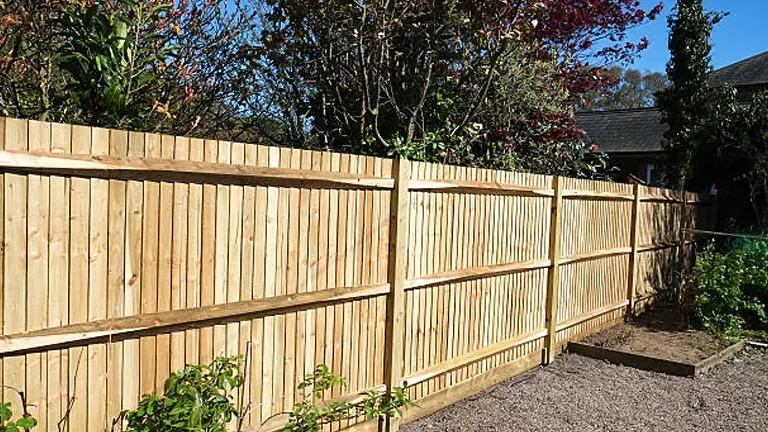
This guide invites you on a journey to explore how these elements can be balanced with finesse, ensuring your garden fence not only protects but also enhances the beauty of your personal haven. Join us as we navigate the considerations that will lead you to make an informed decision, marrying practicality with aesthetic appeal in perfect harmony.
Understanding the Purpose of Your Garden Fence
Security
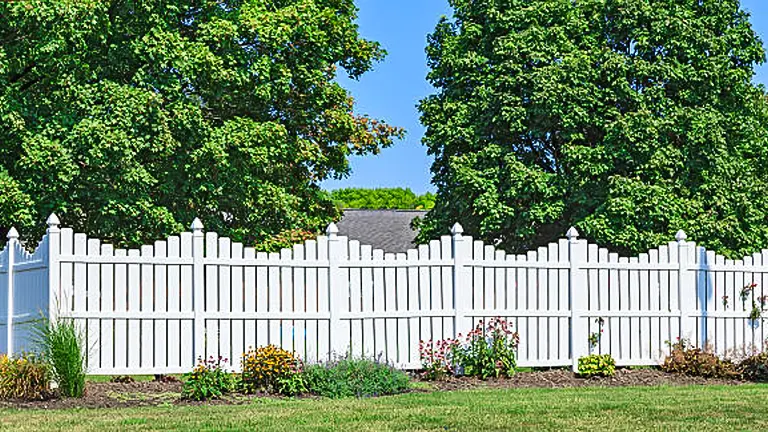
A primary concern for many, especially in urban or suburban areas, is how well a garden fence can protect a property. A higher fence can act as a deterrent to potential intruders, creating a physical barrier that complicates unauthorized access. But security is not solely about height; the design and material of the fence also play critical roles in fortifying your garden’s defenses. Scientific studies suggest that the visibility through a fence, its scalability, and the difficulty of bypassing it (either by going over or under) are crucial factors.
- Visibility: A semi-transparent fence (e.g., chain link with a hedge) allows for surveillance while deterring intrusion by maintaining visibility.
- Scalability: Design features like pointed tops or anti-climb spikes can significantly deter intruders. According to research, fences over 8 feet tall significantly reduce intrusion attempts, but adding anti-climb measures enhances this effect.
- Material Strength: High-density materials like steel or reinforced vinyl offer more resistance to breaching efforts. The breaking strength of materials, measured in pounds per square inch (psi), becomes a critical factor. For instance, steel used in fencing can withstand forces of 40,000 psi, making it an exceptionally secure option.
Privacy
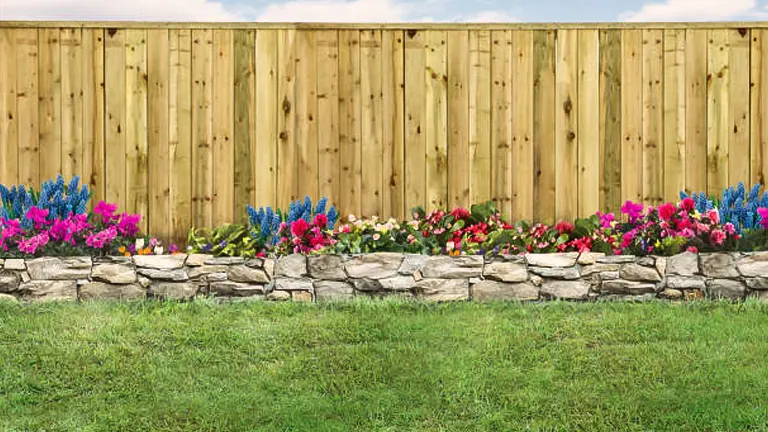
For those seeking a secluded haven within their garden, the fence serves as a shield from the outside world. The height of your fence can significantly impact the level of privacy you enjoy, allowing you to relax in your outdoor space without worry of observation from neighbors or passersby.
Aesthetics
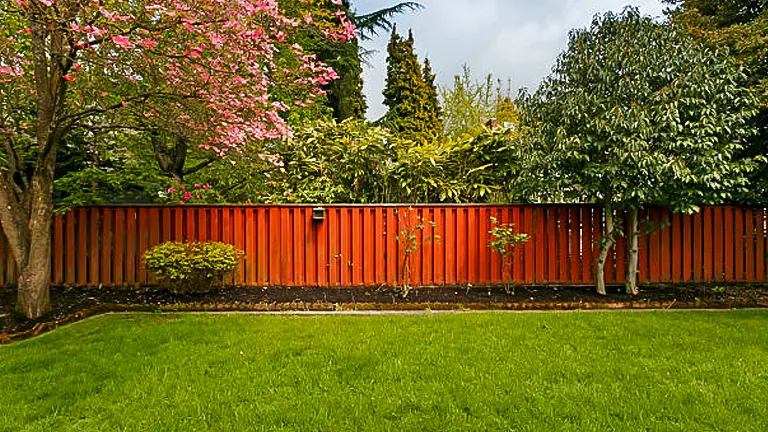
The visual impact of a garden fence cannot be understated. A well-chosen fence height and style can complement your garden’s layout and the architectural style of your home, creating a cohesive and attractive landscape. Conversely, a poorly considered fence can detract from the overall appearance, clashing with its environment or overwhelming the garden it aims to protect.
Legal Considerations
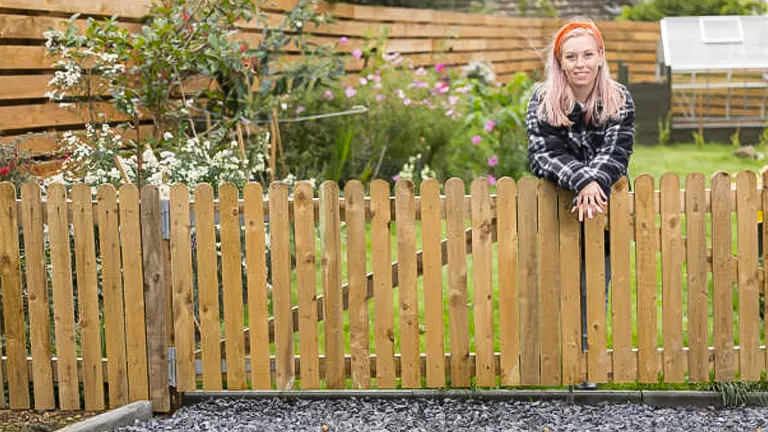
Before any decision is made, it’s imperative to be aware of the legal landscape surrounding fence construction. Local zoning laws, building codes, and homeowners’ association (HOA) regulations can all dictate limitations on fence heights, requiring homeowners to navigate these rules to avoid penalties or the need for costly modifications.
Factors Influencing Fence Height
Type of Garden

The nature of your garden significantly influences the ideal fence height. Vegetable gardens, often targeted by wildlife, may require taller fences to deter animals like deer, which are capable of jumping heights of 6 feet or more. In contrast, ornamental gardens might focus more on aesthetics, opting for lower fences that enhance, rather than obscure, the beauty of the garden.
Local Wildlife
Your local fauna can dictate the necessary adjustments to your fence design. Areas frequented by rabbits, deer, or other wildlife might necessitate specific heights and materials to effectively keep these visitors at bay. For instance, a fence aiming to deter deer might need to be as tall as 8 feet, whereas a design intended to prevent rabbits from entering could include buried barriers to stop them from digging underneath.
Neighborhood Style
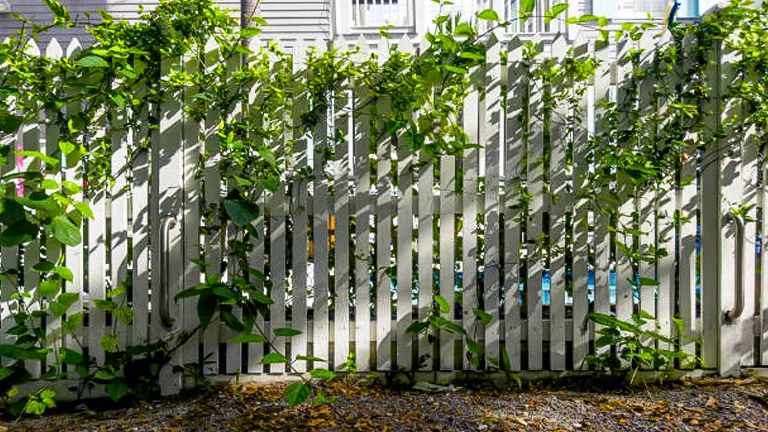
The prevailing aesthetic of your community should also inform your fence height decision. A fence that is significantly taller or shorter than those of your neighbors can disrupt the visual harmony of the area. Striking a balance between your personal needs and the established neighborhood style can foster a sense of community and continuity.
Weather Conditions
The local climate plays a crucial role in determining the most appropriate fence height. In regions prone to strong winds, a taller fence might be susceptible to damage unless designed with wind resistance in mind. Conversely, areas that experience heavy snowfall might benefit from slightly taller fences to accommodate snow drifts without losing functionality.
Security Concerns
Security is a paramount concern for many homeowners. A fence that provides privacy and deters unauthorized entry often stands at least 6 feet tall, creating a psychological and physical barrier to intrusion. However, the quest for security should be balanced with aesthetic considerations to ensure the fence complements rather than detracts from the property’s appearance.
Privacy Needs
Privacy preferences vary widely among homeowners. While some may prefer a tall, solid fence to create a private oasis, others might opt for a more moderate height that offers privacy without creating a sense of isolation. The key is to consider how the fence’s height and design impact both your privacy and the overall look of your garden.
Regulatory Compliance
Before finalizing any plans for your garden fence, a thorough understanding of local regulations is essential. Zoning laws, building codes, and HOA guidelines can all influence the permissible fence height, materials, and design. Compliance with these regulations not only ensures legal adherence but also aids in maintaining good relationships within your community.
Integrating Security and Aesthetics
Achieving a harmonious balance between security and aesthetic appeal in your garden fence is both an art and a science. The design process should start with a clear understanding of your primary needs, whether they lean more towards security, privacy, or aesthetics. From there, consider materials and designs that fulfill these needs while also complementing the style of your home and garden.
- Material Selection: The choice of material can dramatically affect both the look and functionality of your fence. Wood offers a natural, traditional appearance but requires regular maintenance. Metal, such as wrought iron or aluminum, provides durability and elegance but at a higher cost. Vinyl fencing offers a balance of low maintenance and aesthetic versatility.
- Design Details: Consider incorporating design elements that enhance both security and beauty. For example, a lattice top can add visual interest to a tall privacy fence, allowing light to pass through while maintaining a barrier against outside view. Strategic planting of climbing plants or shrubs along the fence line can also soften its appearance and integrate it more fully into the garden landscape.
- Color and Texture: The color and texture of your fence should harmonize with your garden and home. A color that complements the exterior of your house can make the fence seem like an extension of your home, while texture can add depth and interest to the overall design.
Fence Cost Considerations
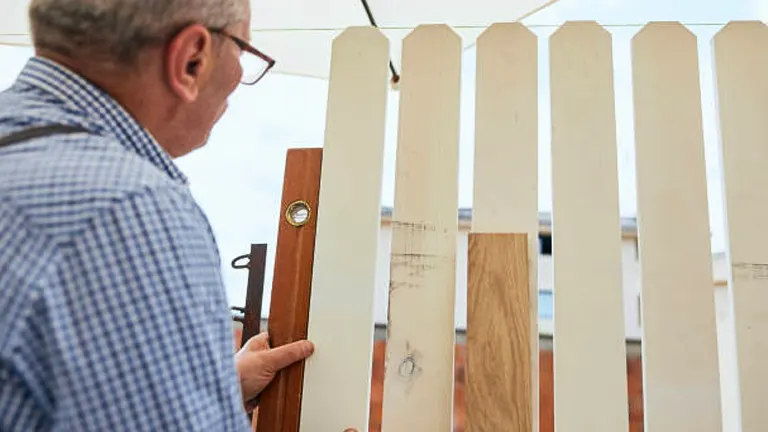
When planning the height and design of a garden fence, one cannot overlook the financial aspect of this significant home improvement project. The cost of fencing can vary widely depending on the materials chosen, the height of the fence, and the overall design complexity. Understanding these cost considerations is essential for homeowners to make informed decisions that align with their budget, while still achieving their desired level of security and aesthetic appeal.
Material Costs
The choice of material has a substantial impact on the cost of a garden fence. Common materials include wood, vinyl, aluminum, and wrought iron, each with its own price range and maintenance needs.
- Wood (Cedar, Pine, Redwood):
- Durability: Cedar and redwood have natural oils that resist decay and pests, lasting up to 20-30 years with proper maintenance. Pine, treated for outdoor use, has a shorter lifespan of about 15 years.
- Maintenance: Requires biennial sealing or staining. Costs vary by product but average $30-$50 per gallon, covering 200-300 square feet.
- Environmental Impact: Sustainable when sourced from certified forests but requires regular maintenance using chemicals.
- Vinyl (PVC):
- Durability: Can last over 30 years without fading or cracking. It’s non-porous and resistant to pests.
- Maintenance: Low; periodic cleaning with soap and water is sufficient.
- Environmental Impact: Production and disposal raise concerns due to non-biodegradable plastic. However, its longevity may offset initial environmental costs.
- Aluminum:
- Durability: Does not rust, offering a lifespan of 20+ years. It’s lightweight yet strong.
- Maintenance: Minimal; occasional rinsing is usually enough to maintain its appearance.
- Environmental Impact: Highly recyclable, offering a greener option. The recycling process uses only 5% of the energy required to produce new aluminum.
- Wrought Iron:
- Durability: Extremely durable, lasting decades if maintained to prevent rust.
- Maintenance: Requires sanding and repainting every 2-3 years to prevent rust.
- Environmental Impact: Iron is recyclable, but frequent maintenance has an environmental cost.
Comparative Lifecycle Costs of Fencing Materials
| Material | Initial Installation Cost (USD) | Maintenance Cost Over 20 Years (USD) | Environmental Impact & Sustainability Insights | Total Lifecycle Cost (USD) |
|---|---|---|---|---|
| Wood | $1,000 – $3,000 | $800 – $1,600 | Biodegradable and renewable but requires chemical treatments for longevity, impacting local ecosystems. Sourced sustainably, it has a lower carbon footprint. | $1,800 – $4,600 |
| Vinyl | $2,000 – $5,000 | $0 – $200 (Cleaning supplies) | Made from non-renewable petroleum products, contributing to carbon emissions and not biodegradable. However, its durability reduces replacement frequency. | $2,000 – $5,200 |
| Aluminum | $2,000 – $4,000 | $0 – $100 (Occasional rinse) | Highly energy-intensive to produce but extremely recyclable with a significantly lower impact when recycled material is used. Durable, minimizing the need for replacement. | $2,000 – $4,100 |
| Wrought Iron | $2,500 – $5,000 | $1,000 – $2,000 (Rust treatment and repainting) | Requires significant energy for production but is highly durable and fully recyclable, reducing the need for frequent replacements. Maintenance involves potentially hazardous paints and solvents. | $3,500 – $7,000 |
Additional Insights:
- Wood, while being the most economically viable option upfront, incurs significant maintenance costs and environmental considerations due to the need for chemical treatments. Its appeal lies in its natural aesthetic and the potential for sustainable sourcing, making it suitable for those prioritizing initial cost savings and a classic look, provided they are committed to regular upkeep and environmentally friendly treatment options.
- Vinyl offers a middle ground in terms of initial costs and maintenance, with its main advantage being minimal upkeep. However, its environmental footprint, derived from non-renewable resources and challenges in recycling, makes it less desirable for those highly concerned with sustainability. It appeals to homeowners looking for durability and ease of maintenance without frequent replacements.
- Aluminum, characterized by its longevity and minimal maintenance requirements, stands out for its recyclability and lower long-term environmental impact, despite the high energy cost of initial production. This material suits those willing to invest more upfront for a durable, low-maintenance fence that aligns with eco-friendly principles over time.
- Wrought Iron is the premium option in terms of both cost and aesthetic appeal, offering unmatched durability and timeless design. Its recyclability is a plus, but the need for regular maintenance to prevent rust and the environmental impact of such processes cannot be overlooked. It is ideal for those valuing aesthetics and longevity, with a readiness to invest in maintenance and environmental responsibility.
Navigating Legal and Community Guidelines
Understanding and adhering to local laws and community standards are crucial steps in the fence planning process. These regulations are designed to ensure safety, preserve property values, and maintain a harmonious community appearance. Here’s how you can navigate these requirements:
Local Zoning Laws and Building Codes
- Research: Start by contacting your local planning department or checking their website for information on fence regulations. Key points to look for include height restrictions, setback requirements, and any material prohibitions.
- Permits: Determine if your fence project requires a permit. Securing a permit before beginning construction can save you from potential fines and the need to modify or remove a non-compliant fence.
Homeowners’ Association (HOA) Rules
- Review HOA Guidelines: If you live in a community governed by an HOA, review the association’s rules related to fences. HOA guidelines can be more restrictive than city ordinances, covering aspects like height, style, color, and maintenance.
- Approval Process: Submit your fence plan to your HOA for approval before proceeding. This step is crucial to avoid disputes or the need for costly changes later on.
Neighbor Considerations
- Communicate: Share your fencing plans with adjacent neighbors. Early communication can prevent misunderstandings and foster good will. It’s also an opportunity to address any concerns they might have, which can affect their enjoyment of their own property.
- Boundary Surveys: For fences close to property lines, consider a professional boundary survey to confirm the exact borders of your property. This step helps prevent encroachment issues, which can lead to legal disputes with neighbors.
Professional Consultation
- Legal Advice: When in doubt, consulting with a legal professional or a fencing expert can provide clarity and peace of mind. They can help you navigate the specific regulations applicable to your area and ensure your fence meets all legal requirements.
By meticulously following these guidelines, you can ensure that your garden fence enhances your property without infringing on regulations or neighborly relations. This proactive approach not only facilitates a smoother project flow but also contributes to the lasting value and enjoyment of your outdoor space.
Conclusion
Determining the ideal height for a garden fence involves balancing security needs, aesthetic preferences, privacy considerations, and compliance with legal and community standards. By carefully considering these factors, homeowners can create a fence that not only meets their functional requirements but also enhances the beauty and value of their property. Remember, the most successful garden fence is one that harmoniously integrates into your landscape, reflecting your personal style while respecting the broader community context.
FAQs
- What’s the ideal height for a garden fence to ensure privacy?
The ideal height for a privacy fence is typically between 6 to 8 feet. This range is tall enough to prevent most people from seeing over the fence while standing, offering a good balance between privacy and maintaining an open, airy feel in your garden. - Can a fence be too tall for aesthetic appeal?
Yes, a fence can be too tall and overpower the aesthetic balance of a garden. Overly tall fences might cast significant shadows, making the space feel smaller and less welcoming. The key is to match the fence height to the scale of your property and garden layout, ensuring it complements rather than dominates. - How do local regulations affect my choice in fence height?
Local zoning laws and homeowners’ association (HOA) guidelines often dictate maximum allowable fence heights, materials, and sometimes even colors. Before planning your fence, check with your local municipality and HOA (if applicable) to ensure compliance and avoid potential fines or the need for modifications. - What materials offer the best balance between security, aesthetics, and cost?
Aluminum and vinyl are popular for their low maintenance, durability, and aesthetic flexibility. Wood offers natural beauty and a classic look but requires more upkeep. Wrought iron provides unmatched elegance and security, albeit at a higher cost and with greater maintenance needs. Your choice should align with your priorities and budget. - Are there design features that can enhance both security and aesthetics?
Yes, incorporating design elements like lattice tops, decorative posts, and integrated lighting can enhance a fence’s aesthetics while maintaining or even improving security. Such features add visual interest and can deter climbing without compromising the fence’s overall appearance. - How does fence height impact the maintenance and longevity of the fence?
Taller fences face more wind resistance, which can increase stress on the structure and potentially lead to more frequent repairs. However, the impact of height on maintenance and longevity also greatly depends on the material used and the quality of installation. Properly treated and maintained, most fences can enjoy a long lifespan regardless of height. - Can I increase my garden’s privacy without raising the fence height?
Absolutely. Strategic planting of tall shrubs or trees along the fence line can provide additional privacy without the need for a taller fence. This natural barrier can complement your landscape design while enhancing privacy and security. - What should I consider if I’m on a tight budget but need a secure and aesthetically pleasing fence?
If budget is a primary concern, consider materials like treated pine for wood fencing or look for cost-effective vinyl options. Prioritize sections of your garden that require the most privacy or security for higher or more durable fencing, and use less expensive materials or designs in other areas. Also, DIY installation for some fence types can save on costs if you’re handy and have the necessary tools.
Conclusively, the perfect garden fence height is a blend of security, privacy, and style, tailored to fit both your desires and legal standards. With careful planning, your fence can be more than just a boundary—it can enhance your home’s overall allure and provide the peace of mind you deserve.

Benjamin Brooks
Forestry AuthorGreetings! I'm Benjamin Brooks, and my journey over the past 15 years has revolved around the fascinating realms of content creation, expertise in snow clearing, and the intricate world of lumberjacking and landscaping. What began as a simple curiosity about the natural world and heavy machinery has evolved into a passionate profession where my love for crafting words intertwines seamlessly with my lumberjacking and garden skills.

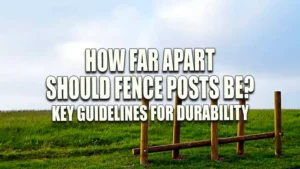
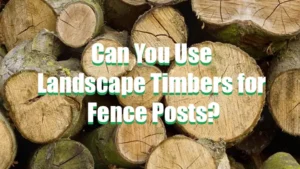

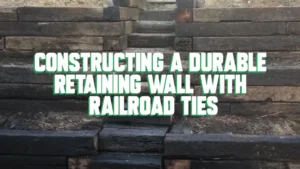


Leave your comment